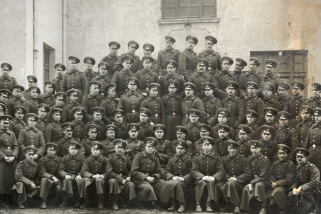Liliya Berezhnaya and Heidi Hein-Kircher
Bulwark Myths of East European Multiconfessional Societies in the Age of Nationalism
Edited by Liliya Berezhnaya and Heidi Hein-Kircher
Description
The “bulwark” or antemurale myth—whereby a region is imagined as a defensive barrier against a dangerous Other—has been a persistent strand in the development of Eastern European nationalisms. While historical studies of the topic have typically focused on clashes and overlaps between sociocultural and religious formations, Rampart Nations delves deeper to uncover the mutual transfers and multi-sided national and interconfessional conflicts that helped to spread bulwark myths through Europe’s eastern periphery over several centuries. Ranging from art history to theology to political science, this volume offers new ways of understanding the political, social, and religious forces that continue to shape identity in Eastern Europe.
Liliya Berezhnaya is an Assistant Professor at University of Münster’s “Religion and Politics” Cluster of Excellence in Germany. Her publications include Iconic Turns: Nation and Religion in Eastern European Cinema since 1989 (2013), co-edited with Christian Schmitt, and The World to Come: Ukrainian Images of the Last Judgment (2015), co-authored with John-Paul Himka.
Heidi Hein-Kircher earned her master’s and doctoral degrees from Heinrich Heine University Düsseldorf. In 2018, she earned her habilitation degree at Philipps University in Marburg. She is currently on the research staff at the Herder Institute for Historical Research on East Central Europe in Marburg, Germany. She is also the Head of Department at the Institute’s Academic Forum.
Contents
List of Illustrations
Acknowledgments
A Note on Transliteration and Toponyms
PART I: BACKGROUND
Introduction: Constructing a Rampart Nation: Conceptual Framework
Liliya Berezhnaya and Heidi Hein-Kircher
Chapter 1. The Origins of Antemurale Christianitatis Myths: Remarks on the Promotion of a Political Concept
Kerstin Weiand
PART II: (DE-)SACRALIZING AND NATIONALIZING BORDERLANDS
Chapter 2. Not a Bulwark, But a Part of the Larger Catholic Community: The Romanian Greek Catholic Church in Transylvania (1700–1850)
Ciprian Ghisa
Chapter 3. Securitizing the Polish Bulwark:The Mission of Lviv in Polish Travel Guides During the Late Nineteenth and Early Twentieth Centuries
Heidi Hein-Kircher
Chapter 4. Ghetto as an “Inner Antemurale“? Debates on Exclusion, Integration, and Identity in Galicia in the Nineteenth and Early Twentieth Century
Jürgen Heyde
Chapter 5. Holy Ground and a Bulwark against “the Other”: The (Re)Construction of an Orthodox Crimea in the Nineteenth-Century Russian Empire
Kerstin S. Jobst
Chapter 6. Bastions of Faith in the Oceans of Ambiguities: Monasteries in the East European Borderlands (Late Nineteenth– Beginning of the Twentieth Century)
Liliya Berezhnaya
Chapter 7. “The Turkish Wall:” Turkey as an Anti-Communist and Anti-Russian Bulwark in the Twentieth Century
Zaur Gasimov
PART III: PROMOTING ANTEMURALE DISCOURSES
Chapter 8. Why Didn’t the Antemurale Historical Mythology Develop in Early Nineteenth-Century Ukraine?
Volodymyr Kravchenko
Chapter 9. Translating the Border(s) in a Multilingual and Multiethnic Society: Antemurale Myths in Polish and Ukrainian Schoolbooks of the Habsburg Monarchy
Philipp Hofeneder
Chapter 10. Mediating the Antemurale Myth in East Central Europe: Religion and Politics in Modern Geographers’ Entangled Lives and Maps
Steven Seegel
Chapter 11. Bulwarks of Anti-Bolshevism: Russophobic Polemic of the Christian Right in Poland and Hungary in the Interwar Years and Their Roots in the Nineteenth Century
Paul Srodecki
Chapter 12. Defenders of the Russian Land: Viktor Vasnetsov’s Warriors and Russia’s Bulwark Myth
Stephen M. Norris
PART IV: REFLECTIONS ON THE BULWARK MYTHS TODAY
Chapter 13. Antemurale Thinking as Historical Myth and Ethnic Boundary Mechanism
Pål Kolstø
Chapter 14. Concluding Thoughts on Central and Eastern European Bulwark Rhetoric in the Twenty-First Century
Paul Srodecki












